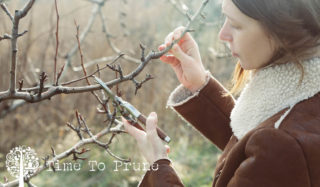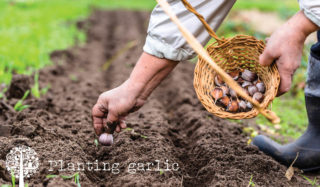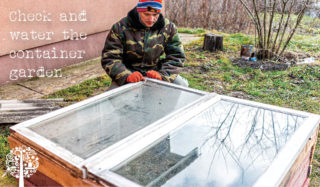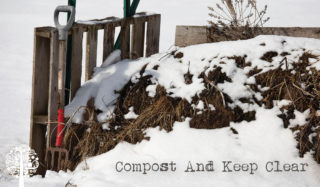January And The Great Garden Cycle Reset
Just as the start of the New Year is a time for fresh beginnings, the garden has reset its cycle and is starting new. Tiny buds are forming on the clematis, the hellebore has begun to put out sepals, and the roots of the perennials ruminating underground are busy at work soaking up the soil’s nutrients in preparation for the growing season ahead. So bundle up, soak up the fresh, crisp winter air, and get a head start on spring with a few garden jobs!
Time To Prune
January is a great time to prune the rhododendrons. Because they’ve already set buds for spring, you will need to be careful not to cut those off, but a good winter prune is beneficial, especially now that the plant’s energy is focused on its roots, not flowers or leaves. Doing so pretty much guarantees new growth in spring.

Willow trees, apple, and pear trees are dormant and, like the rhododendron, can benefit from a mid-winter haircut. First, cut out dead or broken branches and shape the tree into a goblet; this opens the center, creating air circulation to help prevent fungal or bacterial diseases.
The blueberry, raspberry, and blackberry bushes are dormant, making it easy to see their structure for an annual prune. Like apple trees, cut out dead or broken canes and open up the bush’s center.
As tempting as it is now that the pruning shears are out, leave the plum, cherry, and apricot trees alone until summer. Pruning now makes them susceptible to disease.
Vegetable Garden
If the soil is workable, go ahead and plant the garlic. If the veggie garden is covered in snow, carefully clear it away, add a layer of compost and mulch, and then replace the snow you removed. The snow is already acting as a blanket, but topping up the first layer of mulch and compost you added in November will do the garden good.

If you live in a temperate climate zone and the garden has not been covered with snow, go ahead and add that extra blanket just the same. When you’re ready to plant out early peas and other vegetables in mid-spring, the soil will be well nourished and toasty for delicate roots.
Check and Water
Container gardens under the eaves or porch roof should be watered about once a week, especially in cold weather so that the soil won’t erode. And remember all those plants you’re overwintering in the greenhouse or garage. Make sure they are getting enough ventilation! Keep checking them for aphids, whitefly, or mealybugs. If you notice any, spray the infected plants and soil liberally with a homemade, organic pesticide.

Compost And Keep Clear
Winter storms may have disrupted all that well-placed mulch around the shrubs and perennials you laid down in late fall– keep checking and add more if needed. It’s never a bad idea to add nutrients to the soil, even in winter. If you can work the ground, keep digging in coffee grounds, eggshells, orange peel, or tea leaves for outdoor potted plants and around roses and shrubs.
Clear away decaying perennials where you’ve planted spring bulbs. This helps deter slugs and snails and gives space for early bloomers like crocus and snowdrops.

January may seem like a quiet month, but it’s one of the most exciting times as the roots of perennials, vines, shrubs, and trees reset themselves for the season ahead. In the southern hemisphere, it’s the middle of summer; gardeners have already harvested early spring crops from the veggie patch, and the apple and pear trees are beginning to form fruit. All their winter pruning efforts are paying off now in the heat of summer.
Stay tuned as we garden together next month!
.




